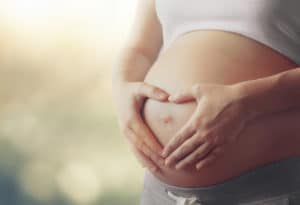Your wish to have a child has been fulfilled – and you are about to give birth to your child? Then it’s a good idea to find out about the birth process in advance. If complications should arise, it is conceivable that a suction cup or forceps birth will be necessary.
The suction cup is a medical instrument used in obstetrics. In a normal vaginal delivery, the use of the suction cup is not necessary. However, if there are difficulties during delivery, the physician and midwife must respond immediately and consider vacuum extraction.
Table of contents
When The Suction Cup Is Used
Only by using the suction cup is it sometimes possible to help the baby into the world quickly and safely. By means of this so-called vacuum extraction, the unborn baby can be optimally supported on its way through the birth canal.
If the life of the baby or the mother is at stake due to complications, a suction cup birth is essential in many cases. Among other things, there is a danger to life if the infant is found to have a lack of oxygen during the so-called expulsion phase.
Also, if physical problems occur in the expectant mother, these could be life-threatening, so that the suction cup must be used.
The Use Of The Suction Cup Is Not Always Advisable
A suction cup birth is only beneficial if the baby is already well forward in the birth canal. If this is not yet the case, forceps delivery is often an adequate alternative.
Forceps can be inserted deeper into the vagina than the suction cup. Therefore, it is often more effective support during difficult births. What you should know about the suction cup and what risks can be associated with a suction cup birth – that’s what you’ll learn in this article.
This Is Why The Suction Cup Is So Important In Many Cases
The suction cup has been an essential part of obstetrics for many years. Compared to other methods, such as cesarean section or forceps delivery, a suction cup birth is rather rare. Extrapolated, it is just five percent in Germany in which the vacuum extraction is performed.
When Mother Or Child Are In Danger
As soon as a birth begins to falter, for example because the mother-to-be’s strength is waning, action is required. If the pregnant woman can no longer make full use of the contractions or presses due to her state of exhaustion, there is usually a risk of suffocation for the child.
This is because without a corresponding effort on the part of the expectant mom, it is difficult for the unborn child to make its way through the birth canal. There is a risk of the brain being undersupplied with oxygen.
A birth is certainly always associated with a certain risk for mother and child. In many cases, normal vaginal birth is not possible. Under these circumstances, a suction-cup birth or a forceps birth is sometimes unavoidable.
During this time, however, the baby is by no means forcibly pulled out of the mother’s womb. Rather, the suction cup has a supporting function. The aim of using the suction cup is to make it easier for the baby to “see the light of day” through the birth canal.
Interesting To Know
The last stage of a birth, the expulsion phase, is extremely stressful and usually very painful for the expectant mother. However, this phase also represents a considerable strain or stress situation, especially for the baby.
Scientists even say that this is one of the most stressful and stressful situations for a human being. When the pushing contractions have started, usually a consequence is that the placenta and the uterus are supplied with less blood and oxygen.
This means that the baby, who may be stuck in the birth canal, may now be at risk of a significant lack of oxygen.
The Most Exciting Phase Of Birth
As a consequence, there is also an increased risk that the brain of the unborn child will no longer be supplied with sufficient oxygen. One of the reasons for this is that the little head is now exposed to very high pressure. It is also possible that the heart rate will slow down.
This, too, is almost immediately accompanied by a lower oxygen supply to the brain. By then, at the latest, it is time to end the birth. To protect the mother and baby, in some situations, suction-cup birth is induced.
Forceps delivery is also considered. Thus, both aids can be used even when the pregnant woman is powerless and completely exhausted. However, in order to use the suction cup, it is important that the cervix is fully open and that the baby is in the correct position.
The cranial position is elementary, whereas the pelvic end position is out of question for the suction cup birth.
The Use Of The Suction Cup
As soon as the amniotic sac has broken and the other requirements for the use of the suction cup have been met, the cup can be applied. The doctor or midwife will make sure that the baby’s head is in the center of the pelvis.
However, positioning it above the center of the pelvis makes the rest of the birth even easier. Orienting the head toward the exit of the pelvis is also beneficial. Before the suction cup birth can be initiated, the pregnant woman’s bladder must be emptied with the help of a catheter.
A full bladder, on the other hand, represents a significant obstacle for the baby, which is to be pulled through the birth canal with the suction cup. Local anesthesia is then administered.
Usually, peridural anesthesia or PDA is used in this regard. Without local anesthesia, the pregnant woman would experience too much pain during the suction cup birth. After the cervix has been checked again, the positioning of the child must be examined.
If nothing stands in the way of further procedures, the perineum is anesthetized in order to make an episiotomy. The doctor then inserts the suction cup into the vagina and immediately fixes it to the back of the baby’s head.
Only by palpation and feeling is it possible to determine whether or not the suction cup is properly in place. Improper attachment of the vacuum extractor could result in the soft tissues or mucous membranes of the pregnant woman being pinched or damaged.
The First Steps In Vacuum Cup Delivery
The suction cup is connected to a pump via a narrow tube. This can now be used to suck out the air that has accumulated between the disc of the extractor and the baby’s skull. The suction generates a kind of negative pressure, which allows the baby to be passed through the birth canal in a largely gentle and careful manner.
Notice
Before applying the suction cup, the medical professional must wait for the next pushing contraction. As soon as the mother pushes, the midwife or doctor can pull on the pump of the suction cup. Once the baby’s head is visible, the vacuum extractor can be removed.
Fingertip feeling is paramount here, because the scalp or skull of the newborn is extremely sensitive. Nevertheless, the usually circular, slightly swollen area on the baby’s head indicates how or with what aid the birth took place.
Good To Know
The redness as well as the swollen skin area may appear frightening at first glance. But you don’t have to worry about any health problems for your little darling. On the contrary, the optical changes will hardly be visible in a few days.
The Different Types Of Suction Cups
A basic distinction is made between these two types of suction cups.
The Kiwi suction bell is always a so-called disposable bell. The device is equipped only with a handle, which has a vacuum vacuum knife.
During the application of the Kiwi Suction Bell, the required negative pressure is generated by hand. The pressure build-up takes a little longer compared to the electric suction bell. In return, this method is gentler on the baby’s sensitive little head.
The classic vacuum extractor has a small electric motor that can generate the necessary vacuum on its own. Usually, suction cups of this type are made of high-quality silicone, rubber or plastic. Until a few years ago, it was common to make the obstetricians out of metal.
Tip
From experience, it is easier to put on the kiwi suction cup because the attachment is usually smaller than that of the electric suction cup. Nevertheless, the suction cup size is secondary.
Regardless of whether it has a diameter of 40, 50 or 60 millimeters, the suction cup birth is much gentler than the forceps birth. And it is gentler for both the pregnant woman and the baby.
Suction Cup Birth Vs. Forceps Birth
Complications during a birth can, in the worst case, lead to the death of the baby. The mother’s well-being may also be in significant danger during a difficult delivery. For these reasons, it is essential from a medical point of view to act with foresight and to apply the suction cup or forceps just in case.
Experience has shown that both obstetric aids – forceps and the suction cup – are well suited to bringing about a rapid birth in the event of complications. Both the suction cup birth and forceps birth are considered safe, provided they are used by professional physicians or midwives. Overall, most experienced physicians prefer the suction cup or forceps birth over a cesarean section.
Sources
https://www.hallo-eltern.de/schwangerschaft/saugglockengeburt/












1 thought on “The Suction Cup: When Is This Obstetric Aid Used?”